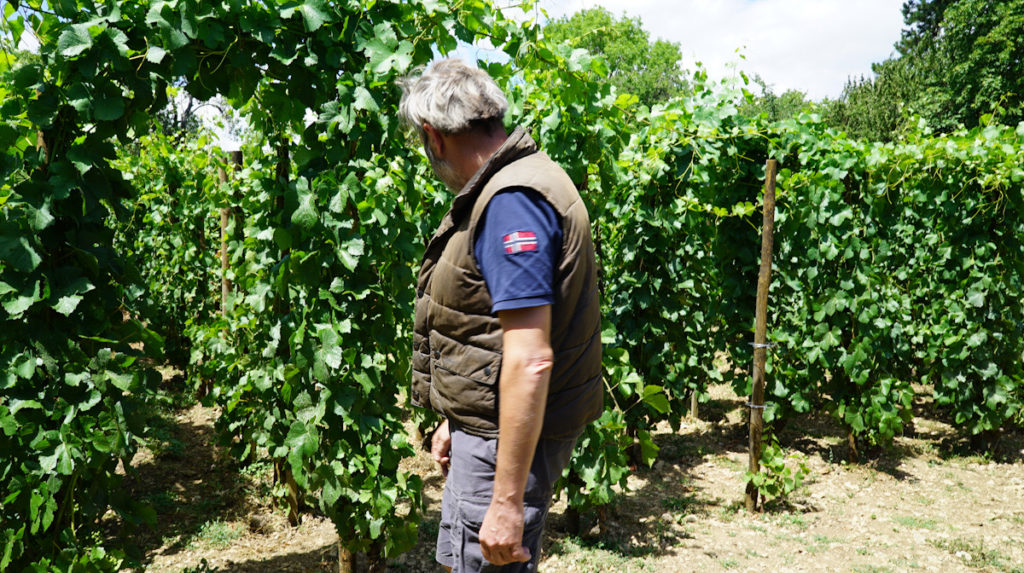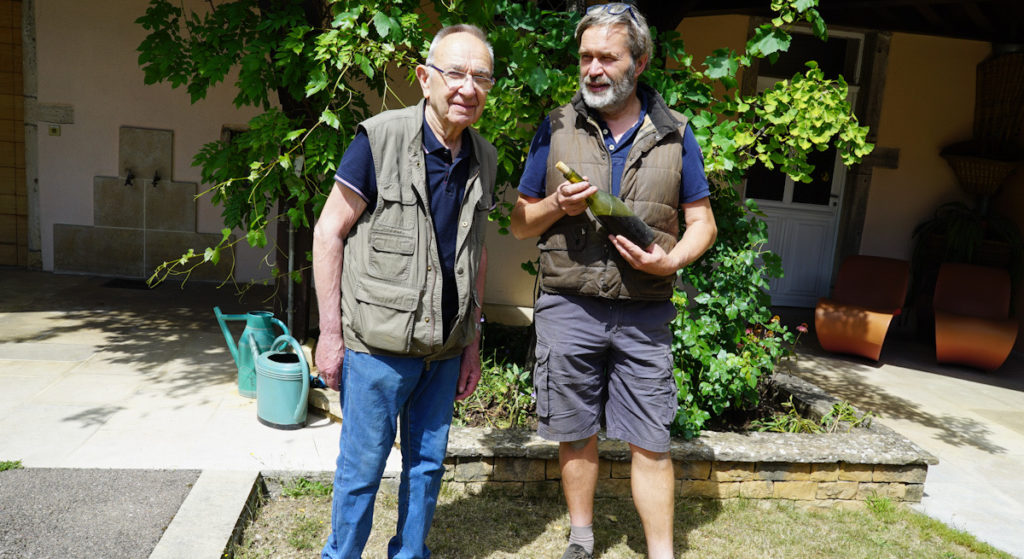I have been following the progress at Domaine Trapet for years. When I tasted the 2010s I got really excited, and was thrilled by the airy lightness of the wines’ character. (This is how I normally start an article…)

But these are not normal times.
Global warming, Covid-19 – the world is changing, and no one will produce the wines of yesterday in the future, regardless of intentions. Climate change is simply too profound and radical. Today’s wines are produced under significantly warmer conditions that the wines I began to buy in the early 1990s.
It was, therefore, fitting to start the Trapet visit in the “future zone” – the test vineyard – just behind the estate.
Jean-Louis proudly showed me the viticultural initiatives he is testing with his sons Pierre and Louis, initiatives that include new methods that will be implemented at Domaine Trapet in the years to come (see separate article).
Truly and deeply biodynamic
Let’s start with the biodynamic approach. Jean-Lous Trapet is one of the most dedicated biodynamic winemakers in the region, and measured by certificates, he heads the most bio-committed estate in Burgundy. He holds both the Demeter and Biodyvin biodynamic certifications, as well an Agriculture Biologique (organic) certification which is the basis for Biodyvin.

Highly certified, Trapet is taking biodynamics to the next – and fullest – level.
The estate has been working biodynamically since 1996 and was certified in 2009. Almost Twentyfive years of knowledge have been accumulated at this estate, giving Jean-Louis great insight into this practice.
Two approaches? Or…
Tasting the Trapet wines, I find a clearer, more defined expression, but also perhaps some variance in the organic impression of the individual wines.
This is perhaps to accommodate different preferences and tastes among the domaine’s client base, and a large estate like Trapet has the possibility of satisfying all palates.
The A Minima, Ostrea and Capita are for me the current and future Trapet. At the top of the range the style seems to integrate modern biodynamism with somewhat more traditional Gevrey wines.
The classic village and two of the 1ers crus – Clos Prieur and Petit Chapelle (not tasted this time) – are perhaps more traditional than the Capita, illustrating the transformation under way and its bridge between past and future.

Generations united.
Trapet is in a dynamic process, with Jean-Louis taking big steps. His two sons are ready to take even further leaps. This is both enjoyable and fascinating to witness.
But enough talk. Some tasting notes are called for.
Tasting notes from July 10
Let’s go with the vin de soif – A Minima, with a new label!
The A Minima 2018 Passetoutgrain is 50/50 gamay and pinot noir, grown in the Grands Champs vineyard located below the road south of Gevrey. As mentioned, this is truly a vin de soif in Trapet’s modern, bio style. It’s rich, forward, and what I would call clearly organic, with lively red and dark fruit and a clear. Very enjoyable.
(Drink from 2020) – Good+ (86-87p) – Tasted 10/07/2020 – ![]()
The Bourgogne Rouge 2018 is a bit tighter and less “call of the wild” than the A Minima. It is vivid, lively, and quite energetic for the vintage, with good oomph and intensity. At this level and in this vintage, I marginally prefer the Minima for hedonistic indulgence.
(Drink from 2020) – Good+ (86-87p) – Tasted 10/07/2020 – ![]()
You need to login as a Premium subscriber to read the rest of this article. If you are not a Premium Subscriber, use the subscribe function and sign-up.

 - A true vin d’émotion – a Burgundy of passion
- A true vin d’émotion – a Burgundy of passion - A truly hedonistic wine – lively and enjoyable
- A truly hedonistic wine – lively and enjoyable - A vivacious wine for pure indulgance
- A vivacious wine for pure indulgance - A potential vin d´émotion - frais et léger
- A potential vin d´émotion - frais et léger